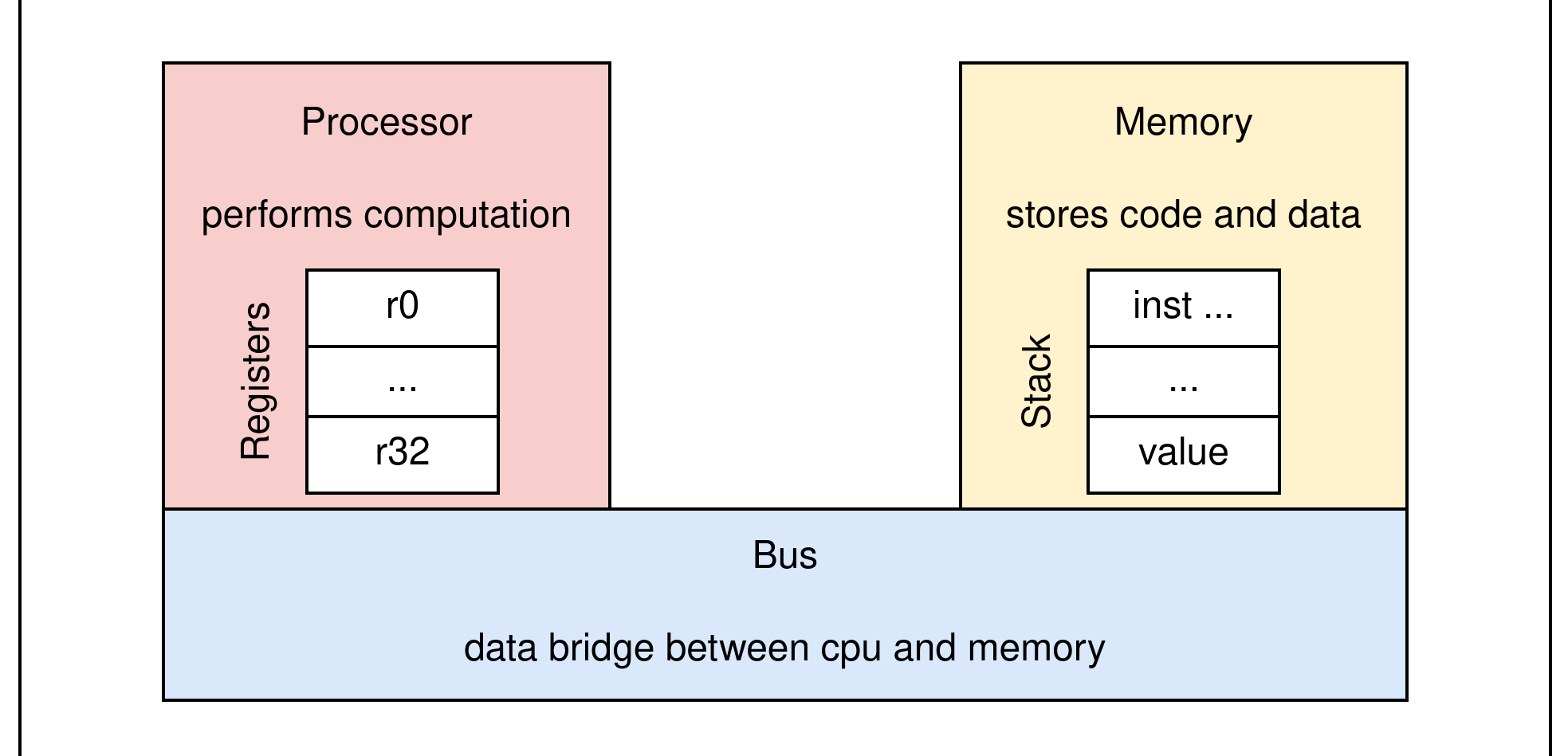Summary
MIPS registers
- 32 32-bit registers
- no data type, just a number
| Name | Number | Use |
|---|---|---|
$zero | 0 | Constant value 0, cannot be overridden |
$at | 1 | Reserved for the assembler |
$v0-$v1 | 2-3 | Values for results and expression evaluation |
$a0-$a3 | 4-7 | Arguments |
$t0-t7 | 8-15 | Temporaries |
$s0-s7 | 16-23 | Program variables |
$t8-t9 | 24-25 | Temporaries |
$k0-k1 | 26-27 | Reserved for the operating system |
$gp | 28 | Global pointer |
$sp | 29 | Stack pointer, the stack is where the program’s instructions are stored in memory |
$fp | 30 | Frame pointer |
$ra | 31 | Return address |
Concept
Instruction Set Architecture(ISA)
- abstraction on the interface between hardware and low-level software
- tells the programmer about the processor’s functionality
- specification of the processor’s supported instructions and registers
Assembly
- human-readable
- provide pseudo-instructions, which are converted into real instructions before being assembled into machine code
Machine code
- instructions in binary format
Processor and memory(load-store model)
- code and data reside in memory
- during execution, each instruction is sent to the processor via the bus
- accessing memory is slow, the processor provides registers for temporary storage(load) of values
- we can perform operations on the values in the registers quickly
- post-computation, the value can be sent back to memory(store)
